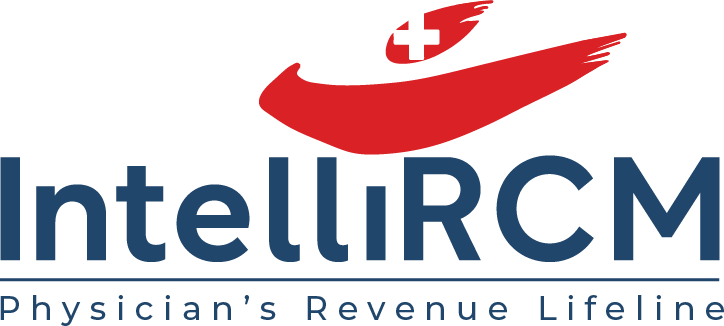
By intellircm 7th Mar 2022 Blog
Healthcare systems worldwide utilize Revenue Cycle Management (RCM) to track patient payments. It’s a complex process, starting from the patient’s initial appointment to the final payment rendered for their treatment.
Any backup or slowdown in the process – from late claims filing to waiting on patient payments – costs you time, money, and effort.
Revenue cycle management is an involved process, sometimes being difficult to understand. This guide will explain the basic processes, and where you can make improvements right now. Even if your system seems to be working, know that it can always be optimized with just a few simple steps.
7 Revenue Cycle Management Improvements to Try
Try these tips, and see how your RCM can start working overtime:
1. Make Your Patients an Important Part of your Process
Patients are the lifeblood of healthcare practices. While that seems to be an obvious statement, some practices forget that the patient base determines the success of a practice, system, or organization. This is particularly true when looking to improve revenue cycle management.
Patients who feel cared for and listened to are more receptive and willing to meet their financial obligations. Work proactively to establish a positive patient relationship, and commit to clear communication in order to build trust. Additionally, understand that patients do not have the same working knowledge of medical billing as your staff – many find it confusing or frustrating. A positive relationship and a helpful staff go a long way to allaying payment issues and optimizing your RCM.
2. Automate Prior Authorization and Eligibility
Automation cuts costs, increases reliability, & speeds up the process. Health organizations are increasing the use of automated prior authorization to expedite reimbursement, fasten the process, and prevent slowdowns in the billing department. Automated prior authorizations and eligibility optimize the revenue cycle process and prevent denials or confusion between patients and providers.
A revenue cycle manager or provider helps ensure that a given practice or organization’s transition to automation runs smoothly. With automation shouldering some of the burden of prior authorization and eligibility requirements, your staff is freed up to focus on more important tasks.
3. Reviewing and Timely Filing of Claims
Each insurance provider has unique dictates to consider, with two major factors to consider and become familiar with:
- Denied Claims Filing
- Fresh Claim Filing Limit
Denied claims and rejected claims are two different things – a denied claim simply requires additional information like authorizations or updated coding. A rejected claim is simply rejected – no amount of additional information will revive it. With a rejected claim you must submit that claim again with new/corrected information. Time is of the essence with denied claims - addressing the unpaid claim within 24 hours of receipt drastically increases the chance of payment.
Fresh claim filing limits refers to the period from the date of service to the filing deadline. Again, each insurance company has different filing limits – Medicare, for example, allows one year from the date of service (DOS), while some private insurance companies only permit 90 days from DOS.
Timely filing means making deadlines. When deadlines are not met, claims go dead/unpaid which will be the provider's pure loss. This makes it essential to have a process in place for meeting filing deadlines.
4. Use Data to Track and Benchmark Performance
Consider implementing a data-driven healthcare revenue cycle. Organizations have found that using financial and clinic data to track key performance indicators helps them to understand and predict trends. The organization can then break down the information to determine how to shift the trend toward the right direction. Determining the impact over 30, 60, and 90-day cycles allows your organization to begin making changes now that reap benefits in the future.
5. Collect Patient Financial Responsibilities Upfront
The insurance market is flooded with plans marred by deductibles that are typically too high for a patient to pay at once. Because healthcare providers rely on patients to pay for their healthcare services, late, missing underpayments slow your revenue cycle.
Healthcare organizations run a constant risk of never receiving full payment for their services. Beyond that, it takes more time and resources to try and secure the payment, increasing slowdowns and losses. However, patient collections can be optimized with simple steps: collecting deductibles upfront or presenting payment plan options before services are even rendered.
6. Invest in Technology
Technology is an integral part of business and will continue to define entire company cultures. The better the technology, the more effective and efficient your healthcare organization will be.
Not having the necessary technology to keep up to date with diagnostic codes and payer requirements can effectively kneecap your ability to submit claims and have them paid. If it seems like insurance companies seem to automatically deny every attempted claim submission, consider investing in new technology-based options. Things like payment variance reporting identifies underpayments; some software (not unlike the automation we mentioned above) performs repetitive tasks, to free up your staff.
Simply begin by contacting an expert that can determine your unique needs.
7. Consider Outsourcing your RCM Process
Companies tend to shy away from the concept of “outsourcing” because it is sometimes synonymous with downsizing or job loss. But outsourcing your RCM process isn’t seeking to replace your staff – it simply helps ease the load.
Outsourcing your revenue cycle management helps your organization gain control of revenues while streamlining business processes. Companies specializing in RCM have tech expertise and use data analytics, automation, and artificial intelligence to improve RCM processes. Remove the repetitive, mundane, and time-consuming tasks from your billing department and let them do what they do best – form relationships with patients and help guide them through the billing process.
Companies like IntelliRCM don’t replace your staff. We work with them to improve the coding and billing process.
IntelliRCM is There for You
IntelliRCM boasts a talented roster of consultants, physicians, and certified professionals that are committed to helping your organization or practice grow. Through our innovative thinking and goal-focused process development, we’re now able to offer solutions for everything mentioned above – from automation to familiarizing your team with claim deadlines. The IntelliRCM, team follows a 24-48 hours turnaround timeline for the claim submissions, and a 48 hours turnaround timeline on denied claims once the denial is received.
The core of your business shouldn’t be constant billing headaches. The provider's goal is to offer better quality of care and build meaningful connections. We invite you to engage with our expert team and see how we can improve your revenue cycle with ease.
A better business is just a click away – contact IntelliRCM today for executive-level revenue cycle management.





